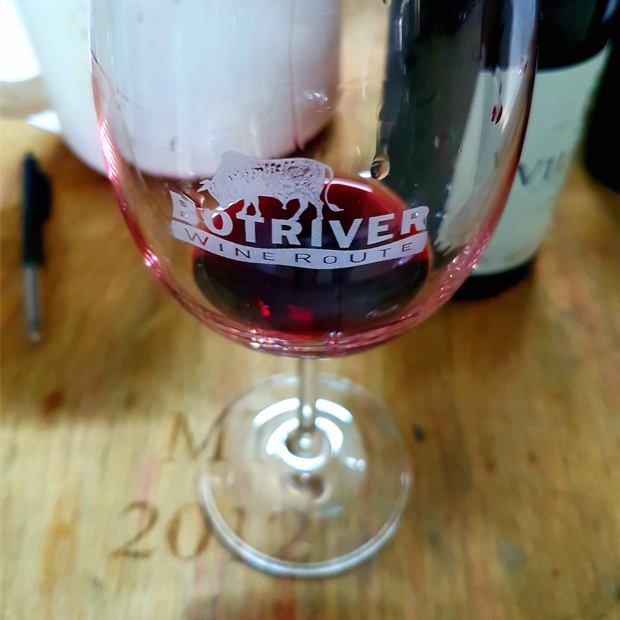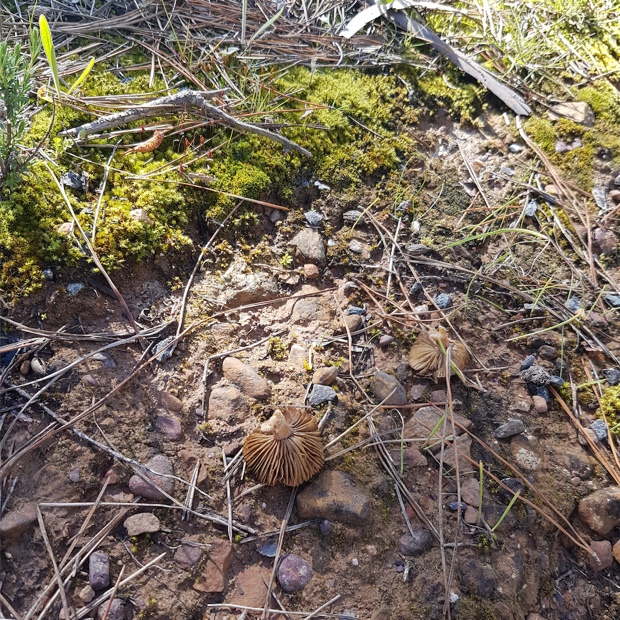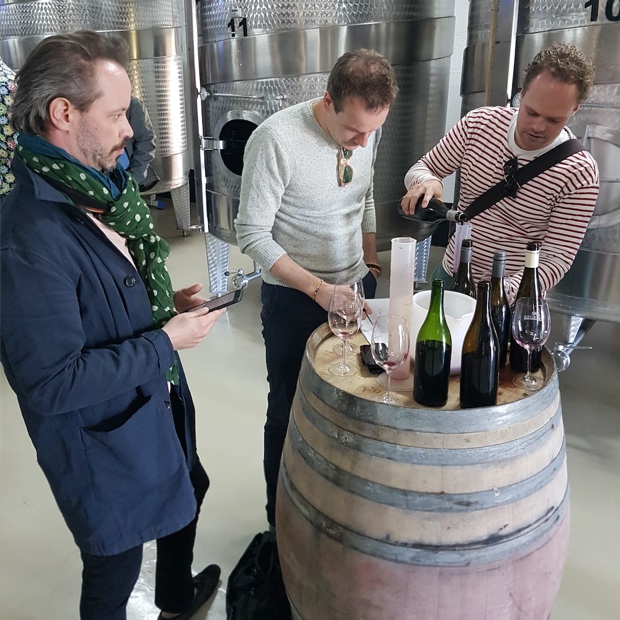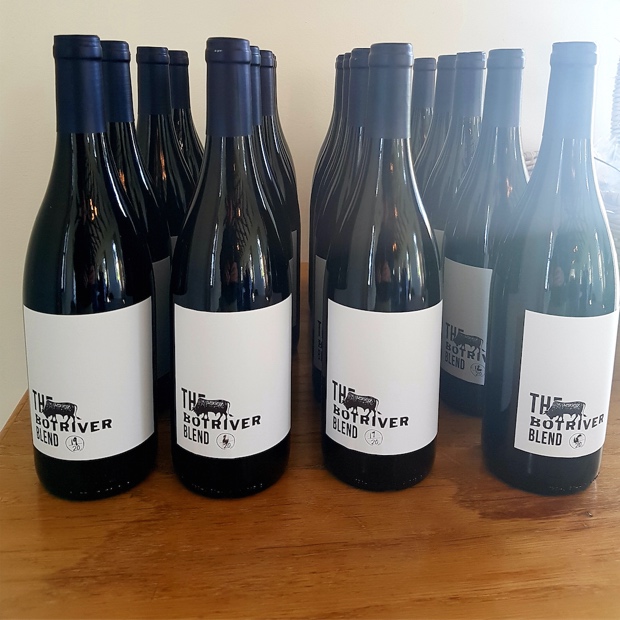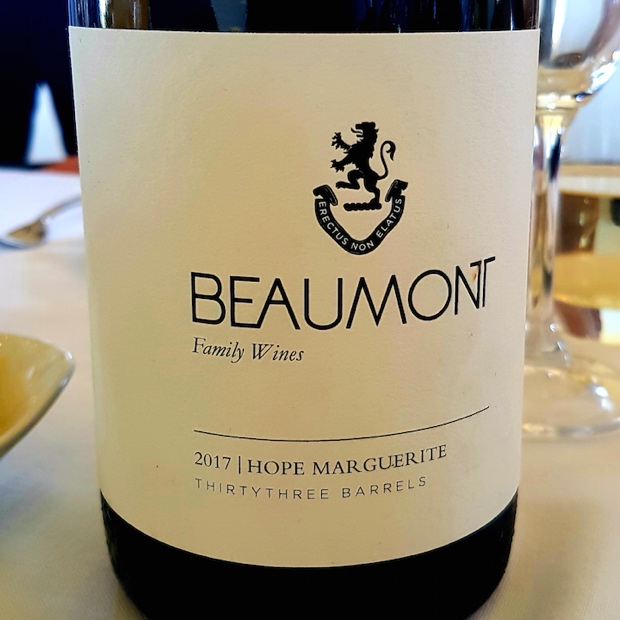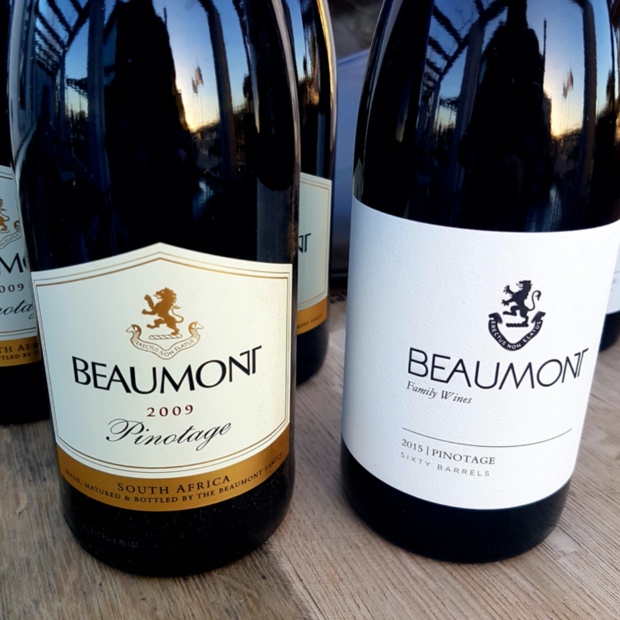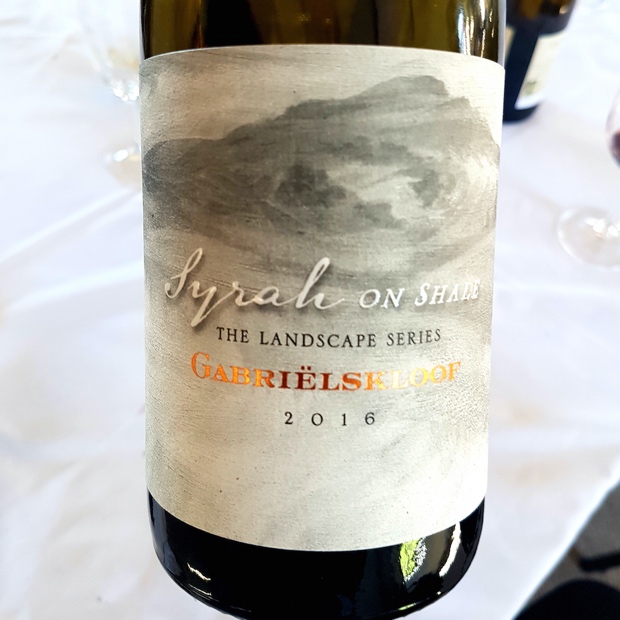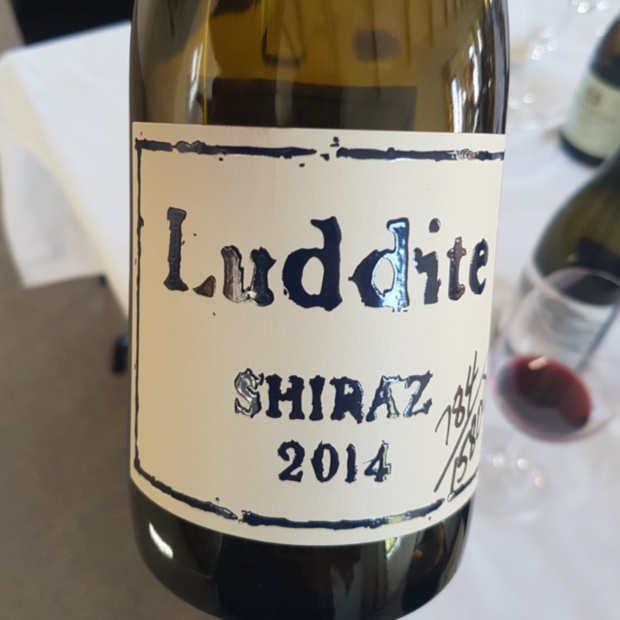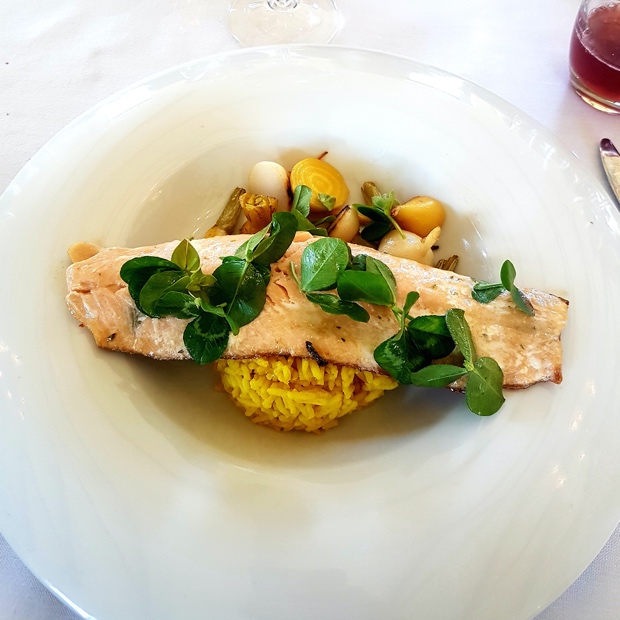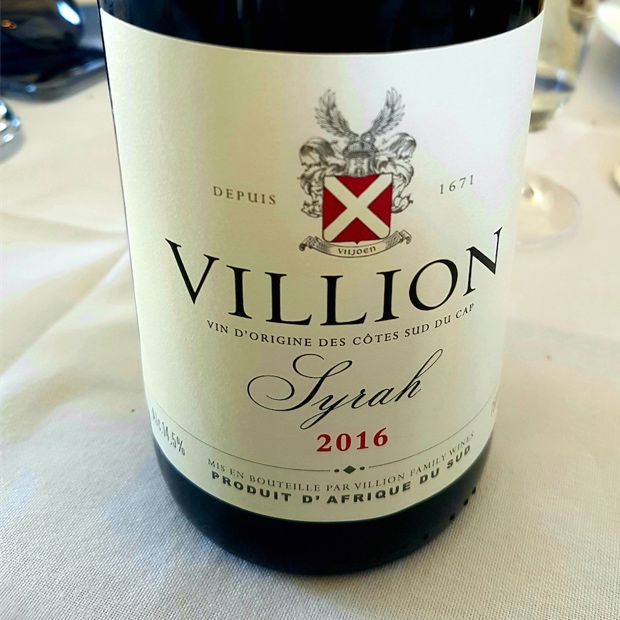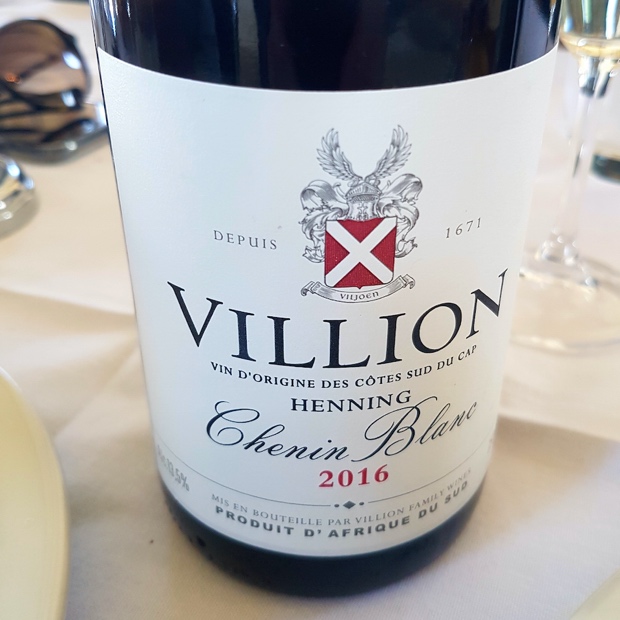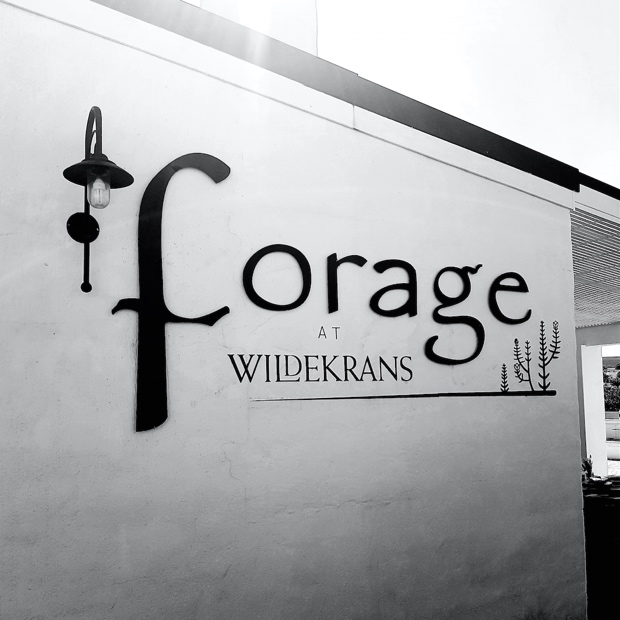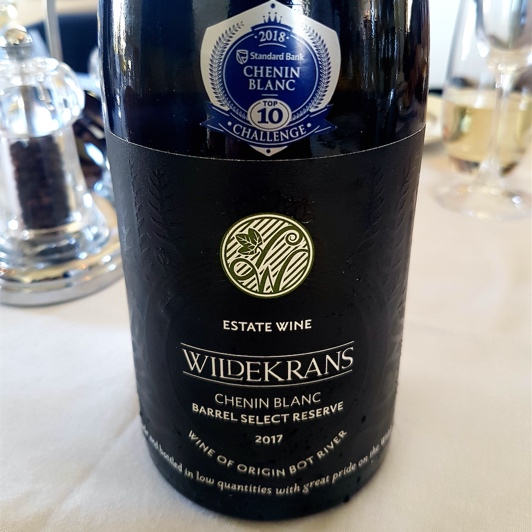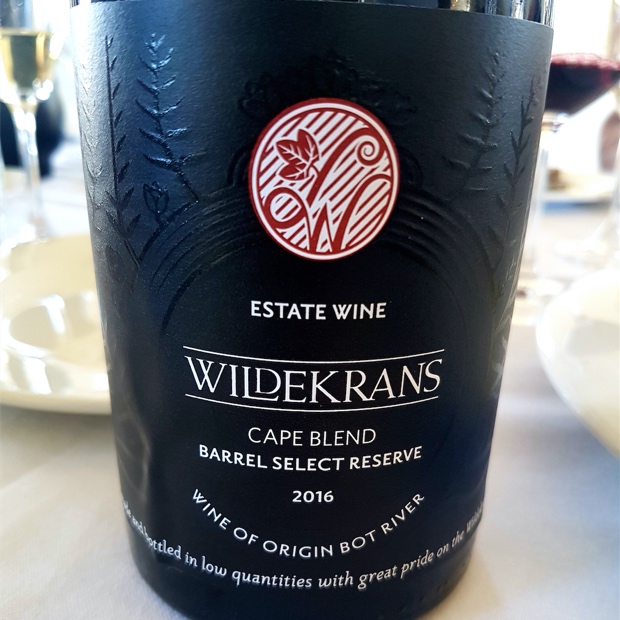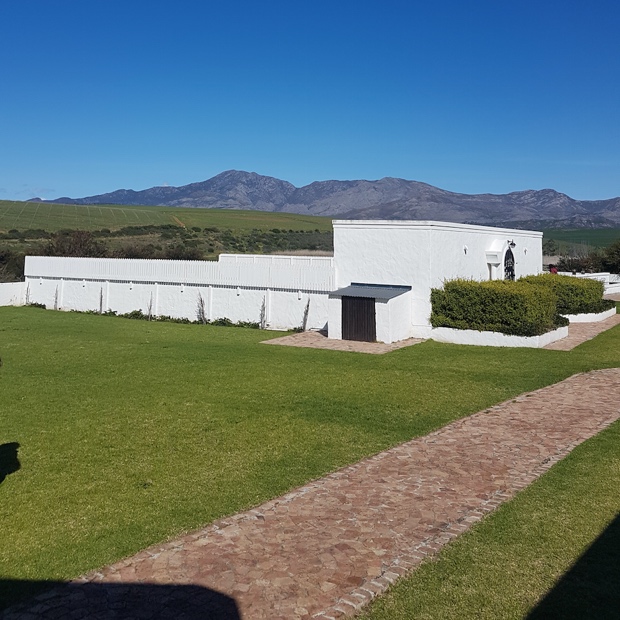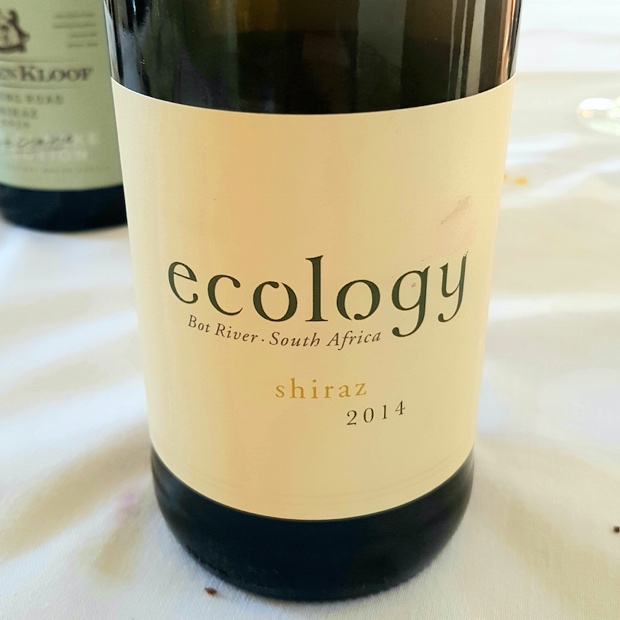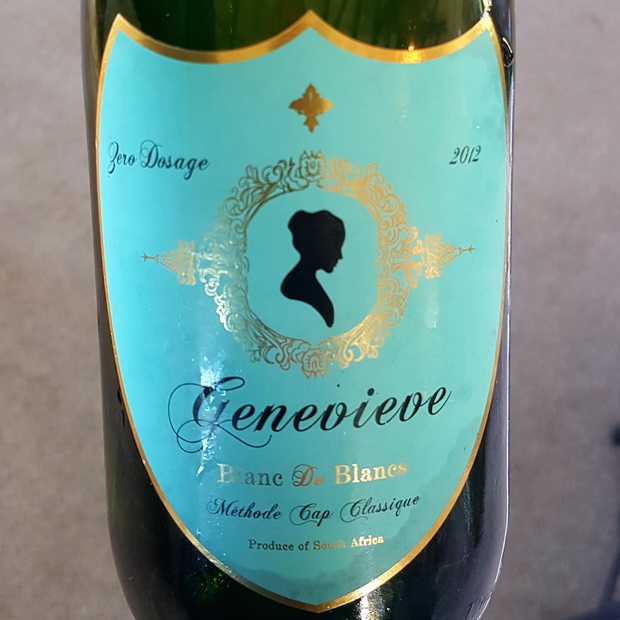Back in September 2018 a day trip to the Bot Rivier wine region unfolded as a three-fold experiential immersion into food, wine and place. It was as though Spring sprung overnight, with temperatures near freezing in having chilled the previous Stellenbosch night and then the proverbial just around the corner took over. In the morning the ground at Wildekrans teemed with wild herbs, edibles and mushrooms, the skies bled a perfect blue and the air breathed anew.
Related – Searching for great heart in South Africa
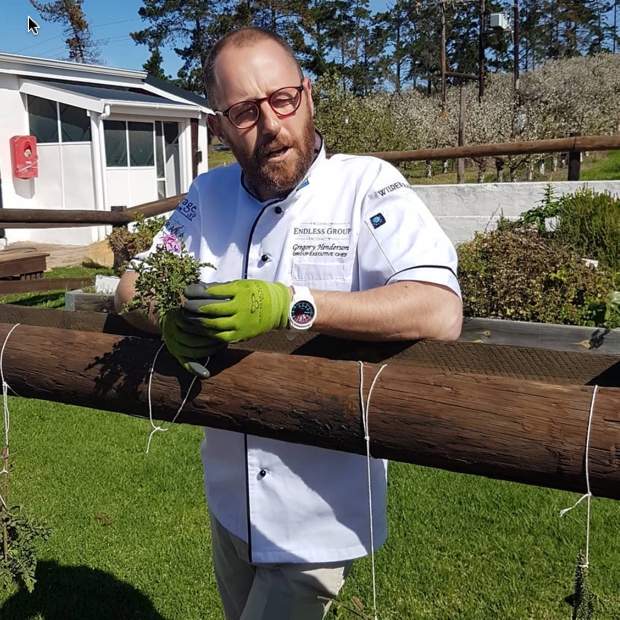
Mesmerized by chef’s foraging knowledge and passion ~ @wildekranswines @wildeforage #gregoryhenderson #botrivier #capewine2018
Bot Rivier lies southeast of Cape Town, sandwiched from south to north between Hermanus and Stellenbosch. “From the top of the Houw Hoek Pass, one gets the first glimpse of the vast, rolling hills and big sky of the Bot River area, where real people make real wine.” This is the credo of the family of wineries that farm and produce in the area. There are 12 members of the wine-growing association, all within a 10km radius of one another. At Wildekrans we participated in a ground foraging experience alongside Chef Gregory Henderson.
Chef Henderson of Wild Forage led the provender hunt up the road from his kitchen for a unique South African perspective on land to table. Luddite’s Niels Verburg led the misfit, interloping and ill-equipped to make good wine group of sommeliers and journalists through a multi-producer/varietal blending session to horrible results; to no fault of the samples and every fault of the mixers. With those tank pulls from Luddite, Beaumont Wines, Gabriëlskloof, Paardenkloof and Villion we transgressed the blending process in four groups in an attempt of exercise that led to very mixed reviews. Said Verburg, “we gave you six beautiful wines and you gave us four bad ones back.” Their wines were significantly better. Now all who participated might know what oenology school is for. Chef’s dishes were everything that the wines could ask for, in support and to encourage a clear focus in assessment. Nineteen wines stood clear and these are the ones.
Beaumont Family Wines
Beaumont Family Wines Mourvèdre 2017, WO Bot Rivier, South Africa (Winery, WineAlign)
Sebastian Beaumont is the first to plant and bottle varietal mourvèdre and his opening gambit is high acidity before your senses reel, pivot and welcome the silky viscosity of texture. Chalky liquidity defines the tannin with a triple savoury sandstone fynbos, rooibos and suikerbos middle notation. A great go it alone look from Sebastian and something to seriously consider going forward. Drink 2019-2023. Tasted September 2018 beaumontwines @Beauwine @Smallwinemakers @beaumontfamilywine @smallwinemakerscollection
Beaumont Family Wines Hope Marguerite 2017, WO Bot Rivier-Walker Bay, South Africa (Agent, $35.00, WineAlign)
The vintage clarity speaks to an unbelievable old vines imperative and in this case a stage presence imperative to scrape, zest and juice all the lemons, tangerines and peaches in the world. The fruit quality and integrity conjures a continuum where distant memory fast forwards to present day reality. ‘Tis an extraordinary time to taste chenin blanc in its modern vernacular, of so many styles with Sebastian Beaumont’s so high on the pyramid. The The 2017 accomplishment includes further complex compliments, dried pineapple, lemon peel and an herbal wonder powder. This is the sauce. “This is the day, your life will surely change. This is the day, when things fall into place.” Soul mining for chenin blanc. Drink 2019-2026. Tasted September 2018
Beaumont Family Wines Pinotage 2009, WO Bot Rivier, South Africa (Agent, WineAlign)
The vines would have been just past their 30th birthday and Sebastian remembers the vintage with fond memory, as he would considering he chose to pour this nine years later at a large pinotage tasting. Wood as it was and still is now wholly integrated though both acidity and length are still thriving so structure is the constant and the given. The tang afforded the fruit is spot on with legs stretching, the whole outfit breathing and now with a salty note to ties it all together. Much time remains for pure pinotage pleasure. Drink 2018-2024. Tasted September 2018
Beaumont Family Wines Pinotage Sixty Barrels 2015, WO Bot Rivier, South Africa (Agent, WineAlign)
So interesting to taste this seminal pinotage by Sebastian Beaumont side by each with his 2009 “normale.” The same 1970s planted vineyard is employed, here from two blocks, one 44 years of age and the other being a spritely 21. The salty note on the aromatic top is faint, hidden beneath massive fruit ability, but it depends (of course it depends), on vintage. This one is full of wealthy possibilities and stealth opportunity, especially when the salt rises to the surface in thew clay. That clay effect is a fulsome one, really notable from 2015 to claim fruit, stash it away in reserve and wait for structure to build, crest and relent. Many years will pass as a result of this pinotage process. This is how you build varietal wealth and worth. One of South Africa’s finest. Drink 2019-2027. Tasted September 2018
Gabriëlskloof
Gabriëlskloof Shiraz 2018, WO Bot Rivier, South Africa (Winery, WineAlign)
From winemaker Donovan Ackermann on ‘the koppie’ above Botrivier, here is the fresh meeting the floral with that most excellent Bot Rivier acidity in total command. Done up in 500L French barrels of second passage for the darkest of red fruit. High glycerin too so once this settles in by the end of 2019 or early 2020 it will really coat the palate with 1969 Rothko colour.shape.texture. You can also imagine this acting as the tie to bind Rhôneish blends but also those 21st century South African shiraz-cabernet unions. Great potential here as the go it alone one. Drink 2019-2023. Tasted September 2018 gabrielskloof_ @Gabrielskloof @donniewine @Gabrielskloof
Gabriëlskloof Syrah The Landscape Series on Shale 2016, WO Bot Rivier, South Africa (Winery, WineAlign)
On Shale is forged of a single-vineyard, Bokkeveld site on the Gabriëlskloof property that makes for a stand apart syrah without comparison. A wild ferment encourages idiosyncratic, ferric and hematic tendencies of what can happen on this section of Western Cape geology. The theoretical possibilities from such shale do for syrah what Cape granite and Malmesbury shale won’t, making abstract connections liquid chalk bled through mudstone in the form of herbal amaro syrup. You notice it in the consistency too, so pure, so sappy oozing and in its very intuitive way, extroverted fine. Drink 2018-2021. Tasted September 2018
Luddite
Luddite Shiraz 2017, WO Bot Rivier, South Africa (Winery, WineAlign)
From decomposed shale with a clay base there is a deep and dark mysteriousness to Niels and Penny Verburg’s Houw Hoek Mountains shiraz. Few plumb the depths and pack as much varietal punch as this ’17 drawn from the heart of the three and a half year Western Cape drought. Twenty-four months in barrels three to six years old cobble and frame all the toast, spice and essence for a roll through the hay down a fine-grained tannin hill. It will take this shiraz at least that much time to climb back up, brush off the accumulation and present itself to the world. A really fine wine this is but not without many layers needing to be shed. Wait a minimum two more before finding out. Drink 2020-2026. Tasted September 2018 luddite_wines @LudditeWines @ludditewines
Luddite Shiraz 2014, WO Bot Rivier, South Africa (Winery, WineAlign)
Just a few years offers up so many more clues as to what is going on in Niels Verburg’s shiraz world. First of all the 24 months in barrel and the 24 months in bottle are structure building and basically tell us to stay away for an equally further amount of time. Not that you wouldn’t want to taste one or two along the way but time is the necessity. This is shiraz held back to “gain a balanced potential.” Meanwhile, no other Cape shiraz smells like this. Niels talks about the mattress of curry the khoi bushmen used to lie upon to raise them up above the ground and away from the insects. The plants known as “kerrie” have a very particular herbal-savoury scent, certainly present in Luddite’s shiraz and even more pronounced with a few years of time gone by. It’s exotic, an herbal-spice line trod with floral undertone and in part certainly a cause to that vineyard presence of the curry bush. Texture is fine spun silk, integrated and then comes exquisite acidity to complete the picture. Drink 2019-2027. Tasted September 2018
Villion Family Wines
Villion Family Wines Syrah 2017, WO Western Cape, South Africa (Winery, WineAlign)
The syrah comes from Elgin with a small percentage of viognier plus Bot Rivier with bits of grenache. Mainly neutral 225L barrels are used and in 2016 the blend accumulated alcohol with ease. Got some real life northern Rhône like peppery floral notes but never loses its savoury Cape-bosness. Rich from fruit sweetness but neither weighty nor tannic. A juicy mid-palate makes this perfect for early to mid-term drinking. Drink 2018-2021. Tasted September 2018 villionwines @VillionWines @VillionWines
Villion Family Wines Syrah 2016, WO Western Cape, South Africa (Winery, WineAlign)
Dusty mountain tea and red fruit by Elgin syrah, a touch of Bot Rivier viognier plus bits of grenache. Gently spiced with subtle hints of Cape terroir neither helped nor hindered by mostly neutral 225L barrels. Really notable for its fennel-ness which just goes to show that in the Western Cape fynbos plus geology plus reductive tendencies equal out to the most unique aromatic and gustatory herbal-savoury pesto in the world. Drink 2018-2022. Tasted September 2018
Villion Family Wines Chenin Blanc Henning 2016, WO Bot Rivier, South Africa (Winery, WineAlign)
A moment’s pause to consider the aromatics is unavoidable because the mid-palate complex notions swirl dramatically out of glass, through the mouth and straight into the mind. This with thanks in kind to more than half of the juice having matured for eight months in (36 per cent new) 300 and 400L French barrels. The fruit was not lost in fact it’s uncanny how mandarin orange it is, plus this old vine (30 years and older) mineral-flint strike to round out the third and most expected aspect of the total oeuvre. Rich, unctuous and structured is a great way for chenin blanc to go through life. Drink 2018-2021. Tasted September 2018
Wildekrans Wine Estate
Wildekrans Wine Estate Pinotage 2017, WO Bot Rivier, South Africa (Winery, WineAlign)
A cooler, herbal and uniquely floral pinotage from Braam Gerricke. Bush vines grow on a shady site of small acreage and at altitude for the valley. Pinotage of chalky liquidity from you which you feel the oak and a real sour-sorrel tang. Was in barrel for 15 months and it will need a year or two to fully integrate, than drink well for four or five more years after that. Terrific persistence and length. Drink 2019-2023. Tasted September 2018 wildekrans @WildekransWines @Wildekrans
Wildekrans Wine Estate Chenin Blanc Barrel Select Reserve 2017, WO Bot Rivier, South Africa (Winery, WineAlign)
From winemaker Braam Gerricke his chenin blanc layers and variegates richness and spice. There is nothing simple about the designation or the result, very much in the vein of old vines and barrel licked chenin with great expectation. The ceiling climbs high for this type of execution and with some age for this, followed by some adjustments for the rest the future looks very bright. These are wines poised to climb into another Cape echelon. Drink 2018-2022. Tasted September 2018
Wildekrans Wine Estate Cape Blend Barrel Select Reserve 2016, WO Bot Rivier, South Africa (Winery, WineAlign)
From “selective harvesting,” goes the company adage, “or in other words, harvesting from vines that have been treated with special care.” And we totally buy in to the practice and the humility because the drinkability index runs perfectly high for this “Cape Blend” of pinotage (71 per cent), cabernet sauvignon (19), pinot noir (6) and shiraz. Curiously fresh, spirited and amenable pinotage blend that resists the temptation of ancient methodology to embrace the floral and clean, clean thoughts. All purpose South Africa should heed this call. Drink 2018-2020. Tasted September 2018
Paardenkloof Estate
Paardenkloof Estate Cabernet Sauvignon 2017, WO Bot Rivier, South Africa (Winery, WineAlign)
Planted in 2002, it was 2006 that proprietor Mohseen Moosa first produced this cabernet sauvignon on the mountain that separates Bot Rivier from the Hemel-en-Aarde, three to four kms from the sea, as the crow flies. The cooling breezes help to coax, coddle and accentuate the varietal tendencies , “to promote the primary fruit of the vineyard,” tells Moosa. Beneficial balance and restrained intensity define this wine, from pockets of spice through ultra-violet floral rays. Pleasing fruit meets designate structure for the most solid of South African cabernets. Fine chalky tannins and all in all, really accomplished. Drink 2020-2027. Tasted September 2018 paardenkloof @PaardenKloof @PaardenKloofEstate
Paardenkloof Shiraz The Long Road 2010, WO Walker Bay, South Africa (Winery, WineAlign)
Time has rendered the predominant primary qualities and all things secondary are now in play. The Western Cape mix of dark fruit and one of the region’s cooler spots have conspired to create a dark hole filled with truffle, mushroom, compost and imaginable umami in one seriously complex void. It’s reductive still. quite tart, surely earthy and much like the humid forest coming alive and rising up in the air. Highly evolved at the end of the long road. Drink 2018-2019. Tasted September 2018
Paardenkloof Ecology Shiraz 2014, WO Western Cape, South Africa (Winery, WineAlign)
Into the Overberg we ride for this second line from Mosheen Moosa and Daphne Neethling on a farm at the foot of the Babilonstoring Nature Reserve on the Bot River side, with Hemel-en-Aarde on the other side of the mountain. This is a highly perfumed and soil reductive shiraz with raspberry and naartjie citrus notes. Finely chalky and rich as candied roses. Certainly a bit thick, caky and unctuous. Drink 2018-2021. Tasted September 2018
Genevieve
Genevieve Brut Blanc De Blancs Méthode Cap Classique 2012, WO Bot Rivier, South Africa (Winery, WineAlign)
From proprietor Melissa Genevieve Nelsen this chardonnay spent four years on the lees and is what she calls “my soldier, it stands up right, expresses itself very cleanly.” Tasted two years after she gave us that assessment of the vintage it’s now even more Cap Classique than ever, feathery oxidative, gingery and toasty. It’s classic really and perched on the richer end of the spectrum, evolving with some haste and more than ready to go. Drink 2018-2020. Tasted September 2018 #melissagenevievenelsen @Genevieve_mcc
Genevieve Brut Blanc De Blancs Méthode Cap Classique 2014, WO Bot Rivier, South Africa (Winery, WineAlign)
Genevieve is Cap Classique made by Melissa Nelsen and was first made in 2008, released in 2010. Now with 2014 the lees aging time is 48 months with total output in the 12,00-13,000 bottle range, up from the 5,000 of that first vintage. The goal is 20,000 in the very near future. It’s essentially blanc de blancs, 100 per cent chardonnay as a wise, calm, mature and elegant traditional method sparkling. Just lovely. Drink 2018-2021. Tasted September 2018
Good to go!
godello
Twitter: @mgodello
Instagram: mgodello
